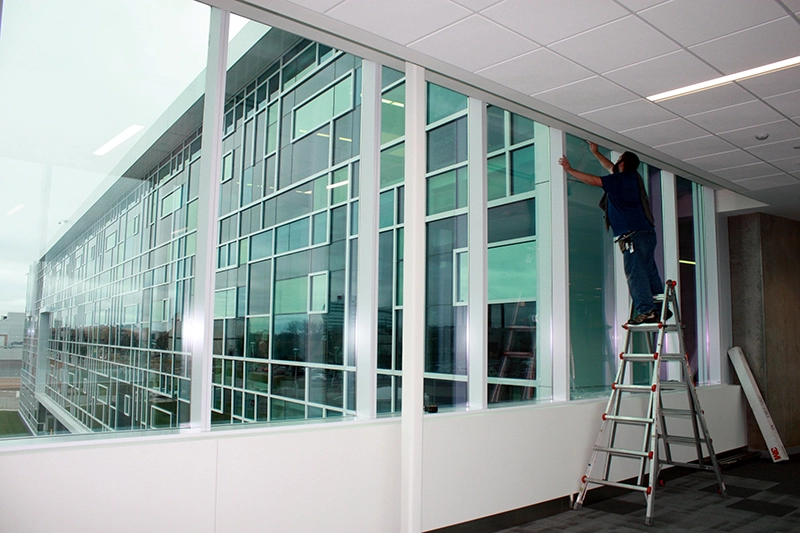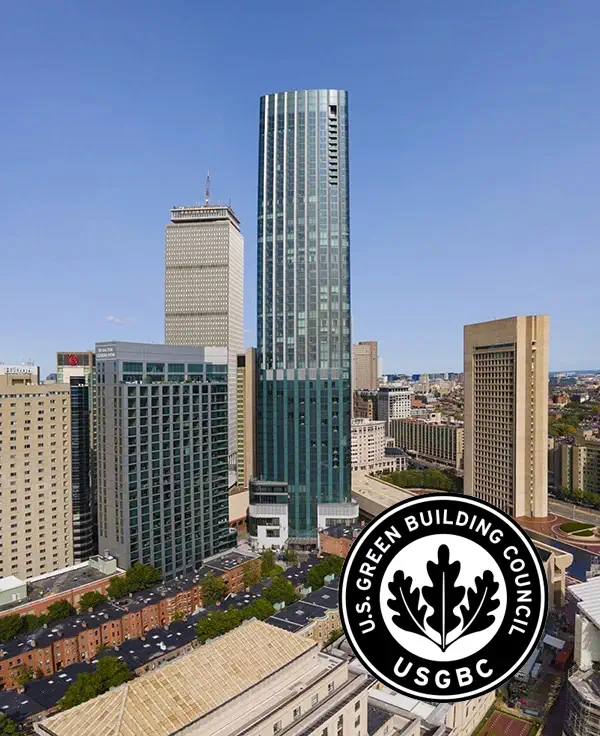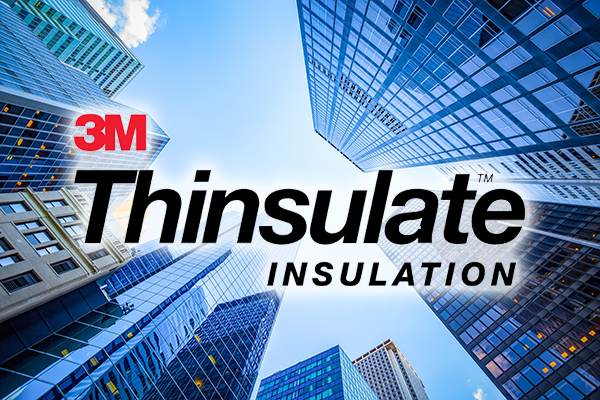Clean Energy DC

3M Thinsulate Helps Clean Energy DC Compliance

Glass-intensive skyscrapers are a recent architectural trend – just take a look at most new construction. They look great, allow in a lot of natural light, and provide for fantastic city views. Despite the use of high efficiency glass, these building envelopes are energy inefficient overall because of the amount of glass that is incorporated into their curtainwalls.
The City government is putting pressure on building owners through Clean Energy DC to reduce their carbon footprint by addressing the inefficiency of the building envelope. Whether you have a building made of single pane glass, double pane glass, Low-E glass, or high efficiency glass, glass heavy buildings often have an inefficient building envelope. There is great opportunity for energy savings and carbon footprint reduction by making existing windows more energy efficient.
56% GHG reduction
by 2032
100% GHG reduction
by 2050
Why Are All Glass Buildings Generally Energy Inefficient?
costs the United States $20 billion
30% of the total cooling load
Window Film: Improving Building Efficiency Without Replacing Windows

Compare retrofit window film installation to window replacement, which is costly, disruptive to tenants, noisy, and environmentally unfriendly as the old window units get thrown right into a landfill. Window replacement, especially if you’re converting from single pane glass to double pane or double pane glass to triple pane, adds a significant amount of weight to the building. There may be structural load implications that need to be considered.
But that’s not the case with 3M Thinsulate Climate Control 75. The installation process is cost-effective, quiet, and quick. And because we’re installing a plastic film to the glass rather than additional glass, there should be no structural load implications.

3M Thinsulate Value Proposition
- Increase efficiency of existing windows
- 12-month utility savings (heating and cooling)
- Reduce carbon footprint
- Help achieve compliance for local regulations
- Virtually no change to building’s appearance
- Rebates and PACE funding available
- 15-year warranty
How Effective Is 3M Thinsulate Climate Control 75 Window Film?
| SHGC | U-Value | |||
|---|---|---|---|---|
| Before | After | Before | After | |
| Single Pane Clear | 0.82 | 0.53 | 1.03 | 0.63 |
| Single Pane Tinted | 0.63 | 0.40 | 1.03 | 0.63 |
| Double Pane Clear | 0.70 | 0.51 | 0.47 | 0.35 |
| Double Pane Tinted | 0.51 | 0.37 | 0.47 | 0.35 |
- First, see how Thinsulate reduces a window’s SHGC and U-Value, which in turn reduce solar heat gain and winter heat loss, respectively.
- Second, see how Thinsulate reduces a clear pane’s SHGC to that of almost a tinted pane.
- Third, see how Thinsulate reduces a single pane’s U-Value to that of almost a double pane.
- Most important to note is that we can improve the performance of most any window, whether it is old or new, single or double pane, clear or tinted, regular or high-efficiency.
What Does All of This Mean?
During the summer, when it is hot outside, much of the sun’s energy or heat is coming into a building through its glass. Part of the sun’s energy is reflected and absorbed by the existing window. What isn’t reflected or absorbed is transmitted through the window, or enters the building. It is that transmitted energy that causes problems such as uncomfortable temperatures, the need for air conditioning, temperature imbalances, and glare. Applying window film increases the amount of the sun’s energy that is reflected and absorbed by the existing window, thereby decreasing what was transmitted. Decreasing the amount of energy that is transmitted, in other words, decreasing the amount of heat that enters the building, is the film's ultimate purpose.
During the winter, when it is cold outside and you’re running your heating system, much of that heat is escaping the building, especially through its glass. Window film reflects much of that heat back inside which means the room stays warmer and you use your heating system less. And many commercial heating systems are powered by natural gas, or steam which is a byproduct of natural gas, thereby increasing a building’s carbon footprint.
Reducing solar heat gain in the summer and heat loss in the winter is what helps the building reduce its energy consumption, utility bills, and carbon footprint.
What Kind of Temperature Improvement Can Window Film Provide?
It’s one thing to talk about how 3M window film improves the efficiency of a window, it’s another thing to see and feel it for yourself.
Here are the results of an experiment that was conducted during the cooling season (summer). Three identical, side by side, vacant rooms were identified in a building. The windows of two rooms were filmed while the third room was left untreated. The temperature of each room was taken and recorded in regular intervals over the course of a week.


How Do I Know If 3M Thinsulate Is Right for My Building?
We offer the following at no cost or obligation:
- Product demonstrations
- Sample installations
- Calculate change in glass specs
- Energy model assistance or completion
- Assistance with rebate application
- Assistance with PACE funding













